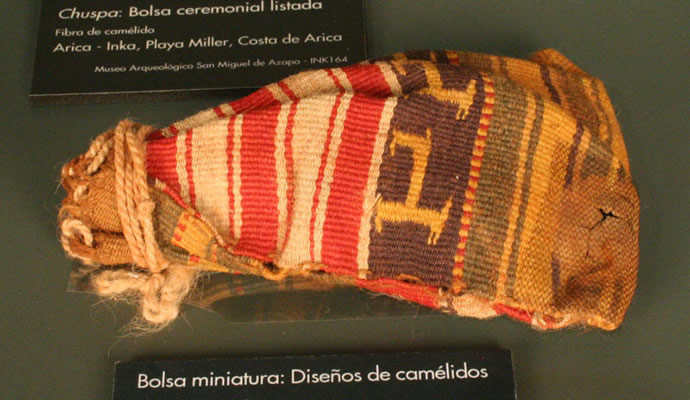
Bolsa miniatura listada y con diseííos de camélido .Fibra de camélido.lnka Altiplánico. Camarones , Región de Arica y Parinacota.MASMA

Chuspa: Bolsa ceremonial decorada .Fibra de camélido .
Arica-lnka.Playa Miller,costa de Arica.MASMA
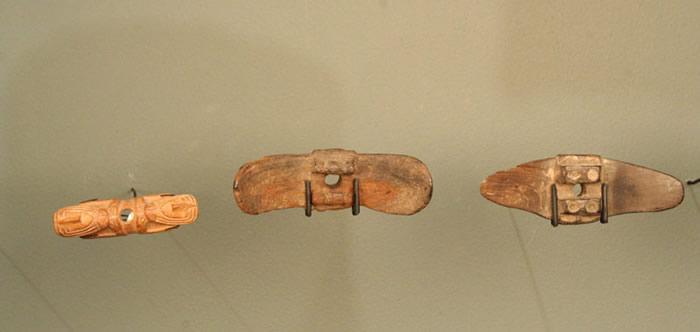
Torteras o pesos de huso para hilar. Madera. lnka. Región de
Atacama. MRA.
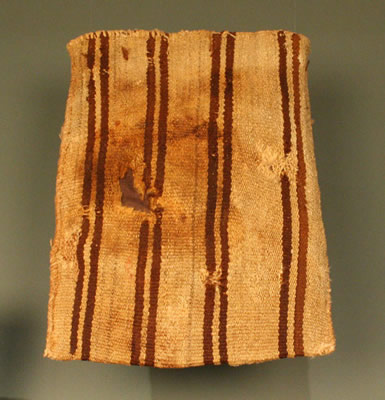
Talega o bolsa agrícola listada. Fibra de camélido. Arica-Inka. Región de Arica y Parinacota. MCHAP
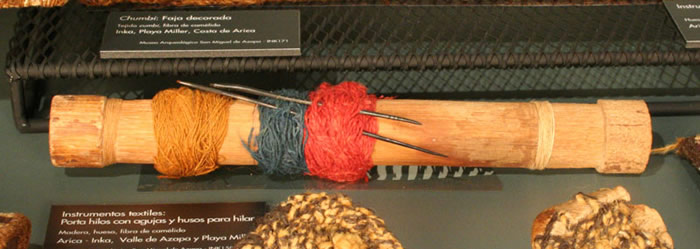
Porta hilos con agujas. Madera, espinas de cactus, fibra de camélido. Arica-Inka. Valle de Azapa. MASMA.
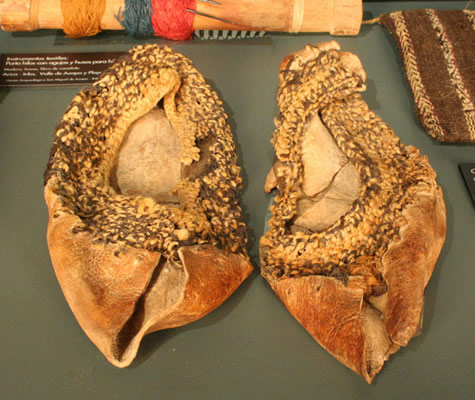
Mocasines bordados. Cuero y fibra de camélido. Inka. Región de Arica y Parinacota. MASMA.
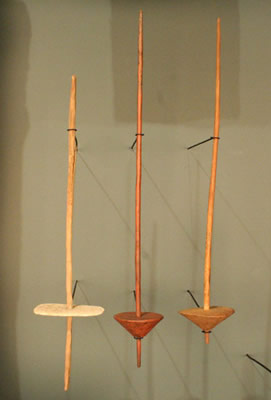
Husos para hilar. Madera. Arica-Inka. Costa y valle de Azapa. MASMA.
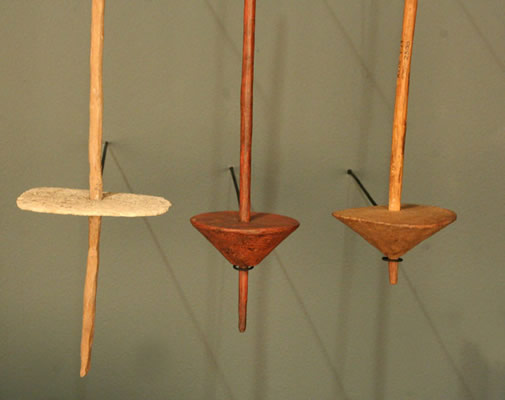
Chumbi: Faja con cordones. Tejido de sarga, fibra de camélido. Arica-Inka. Valle de Azapa. MCHAP
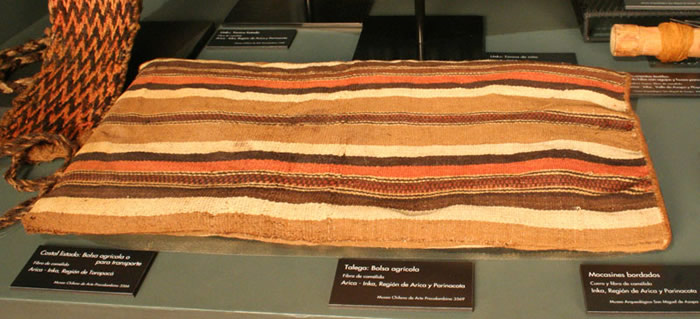
Costal o bolsa agrícola o para transporte. Fibra de camélido. Pica-Inka, Región de Tarapacá. MCHAP
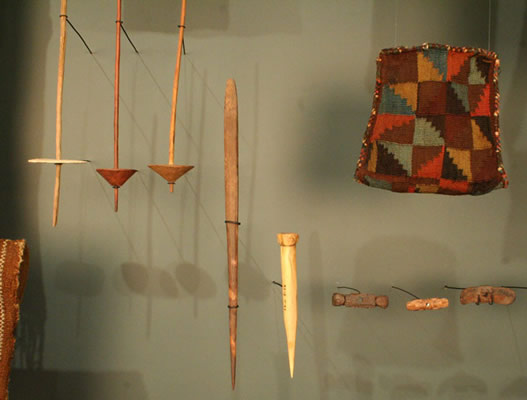
Torteras o pesos de huso para hilar. Madera. Inka. Región de Atacama. MRA.
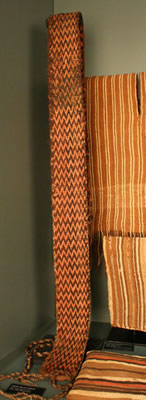
Instrumental textil: husos, separador o levantador de hilos, y pesas de huso. Madera, hueso. Arica-Inka e Inka-Copiapó. MASMA y MRA. A la derecha: Bolsa chuspa ajedrezada. Fibra de

Unku: Túnica listada de colores naturales. Fibra de camélido. Arica-Inka, Región de Arica y Parinacota. MCHAP.
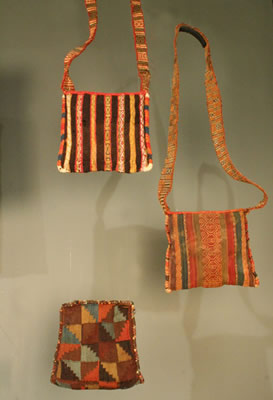
Ar riba y centro: Chuspas,bolsas ceremoniales con correa. Fibra de camélido.lnka.
Región de Arica y Parinacota. MAS
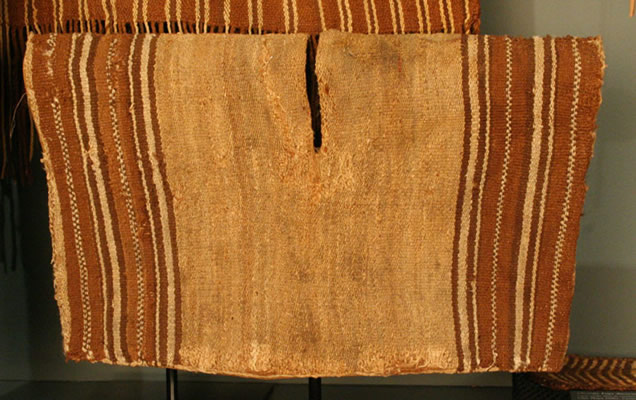
Unku: Túnica de niño.Fibra de camélido. Arica-lnka. Playa Miller,costa de Arica. CMBE

Talega: Bolsa agrícola .Fibra de camélido .lnka.Playa Miller,costa de Arica .MASMA
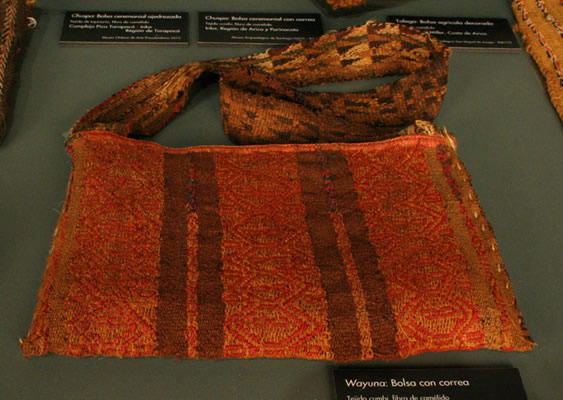
Wayuna: Bolsa agrícola con correa.Fibra de camélido.lnka.Costa de Arica. MASMA
In Chile’s far north, the Inkas imposed their own cultural patterns on local groups, and the textiles that were of particular political and religious importance to them were no exception. This established uniformity dictated that even textiles made in the outlying provinces had to have an unmistakable Inka seal, following the technological and stylistic canons of the Tawantinsuyu. Particular examples include the finely crafted cumbi cloth, some of them with tokapu’s design, which was reserved for the highest ranked Inka dignitaries, and the weaving of ceremonial cloth chuspa-bags according to approved Imperial patterns and colors. When the Caranga and Pacaje altiplano cultures established colonies on the north valleys and coast of this region, they introduced new techniques and styles for clothing and other textiles, imposing their ways on the well developed polychrome textile traditions of local cultures of the time. They favored the use of undyed camelid wool for unku-shirts, chumbi-sashes and agricultural saks, with simple striped designs in contrasting colors. The polychrome and Inka style geometric patterns were reserved for only a few special and exclusive textile items.



















































